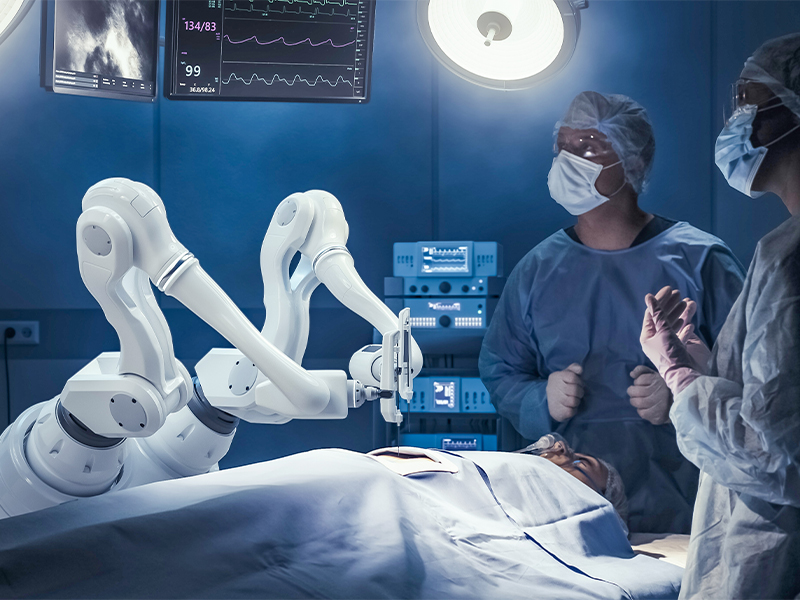If you suffer from hip and knee pain that a physio can’t fix, it may be time to take action to resolve the issue for good. Surgeon DR CHIA SHI-LU of Activ Orthopaedic Centre talks us through options for either a hip or knee replacement operation. Plus, read about some high-tech surgical procedures you might want to consider – including robot-assisted surgery!
Why causes hip and knee pain?
Like a good pair of shoes, we don’t feel our hips or knees when all is well. But once something isn’t right, we start noticing them more – and more frequently – and we realise there’s a problem. There’s no need for panic! The good news is that for most of us, pain in the knees or hips is related to simple conditions such as a sprain, overuse or a minor fall and knock to the joint. These conditions will resolve themselves spontaneously and may never return. For symptoms that last for less than six weeks, over 90 percent of individuals can expect full recovery without any intervention.
However, if the pain or stiffness persists beyond six-to-eight weeks, then it’s likely that there’s significant structural damage to the knee or hip. That’s when it’s best to visit your friendly orthopaedic specialist or sports physician for a check-up.
There are many reasons for these symptoms, but one of the most common reasons is damage to the cartilage within the joint. The cartilage is that smooth tissue that lines the inside of our joints and gives the joint its gliding movements, just like the rubber on car tires.

What can we do about cartilage damage in the knees?
If the symptoms are mild and you can live around it by modifying or reducing some of your problematic activities, then there’s no need for any further intervention. Medication and physical therapy may help, but their effect is usually limited, and over time the relief becomes less and less. If you truly want to resolve the issue, then there are ways to repair the cartilage, or replace it.
What are a few high-tech surgical innovations that can be used on painful knees or hips?
#1 Cartilage repair using marrow cells and biological gels
Unfortunately, there’s still no way of regrowing or recreating normal cartilage, but we have made many advances in repairing or restoring damaged cartilage. One common traditional way of repairing full-thickness loss of the cartilage layer is via microfracture or micro-drilling. Little holes are pierced into the base of the cartilage defect, allowing marrow cells to fill the defect. These marrow cells will over time mature into cartilage cells, which will then produce cartilage to fill up the defect. Sadly, this technique is not very effective with older individuals or when the cartilage defect is very large.
Recent refinements to this technique involve the making of even smaller holes, so that the underlying bone foundation is not disturbed, and the use of collagen gels to help bind the marrow cells to the defect, promoting their growth and maturation. This gives better results in older patients, and those with larger and deeper cartilage defects. It’s quite similar conceptually to filling up holes in the soles of your sneakers!
#2 High-performance enhanced recovery hip and knee replacement operation
Of course, if the bottoms of your sneakers are so worn out that you can see your toes poking out, it’s time to get a new pair of sneakers or to re-sole your shoes! Similarly, in advanced cases of cartilage damage to the knees or hips, also known as osteoarthritis, the more effective, reliable and long-lasting treatment is often a hip or knee replacement. During this procedure the damaged cartilage is shaved off and a new metallic and polyethylene (plastic) cap is placed over the surfaces of the joint.
Advances in implant material and design means that modern implants last longer and perform better, with virtually no restrictions in terms of age-appropriate activities. So, even if you are pushing 70 or above, you should expect to return to light exercises such as moderate jogging or doubles tennis once recovery is complete.
Advances in technique also allow patients to go home moving and walking independently without the use of walking aids, and with minimal discomfort, within a day of the surgery. This procedure type is sometimes referred to as ERAS, for Enhanced Recovery After Surgery. And no, there’s no relationship at all to Taylor Swift’s supremely successful world tour!
#3 Robot-assisted hip and knee replacement operation
How would you like the surgeon performing your hip and knee replacement to be assisted by a … robot? Robots have been used in surgery for many years now, but in the past decade have been developed to assist surgeons with hip and knee replacements. These robots are not humanoid robots like those described in Isaac Asimov’s I, Robot series of books, but take the form of robot arms like those on factory assembly lines manufacturing cars or circuit boards. They can help the surgeon to make the cuts at the end of the bones in a more precise way. There are both advantages and disadvantages to robot-assisted surgery technology, but certainly this is an innovation worth keeping an eye on!

About the doctor
Dr Chia Shi-Lu is a senior consultant orthopaedic surgeon who specialises in hip and knee reconstructive arthroplasty, joint preservation, minimally-invasive joint surgery, and cartilage repair; he’s a co-founder of Activ Orthopaedic Centre, where he helps to identify, treat and heal hip and knee conditions in patients.
#17-09 Mount Elizabeth Medical Centre, 3 Mount Elizabeth
6734 9394 | appointments@activortho.sg | activortho.sg
This article first appeared in the March 2024 edition of Expat Living. You can purchase the latest issue or subscribe so you never miss a copy!
To make the most of living in Singapore, read our latest City Guide here for free!





